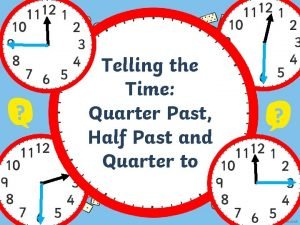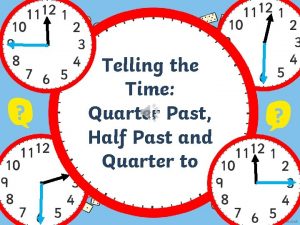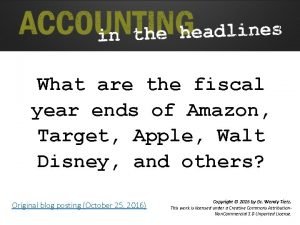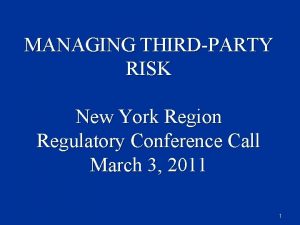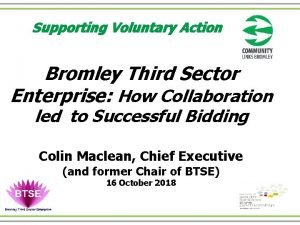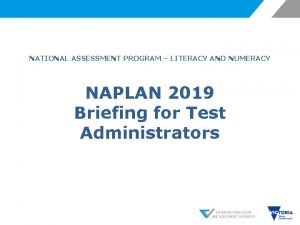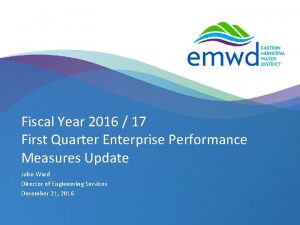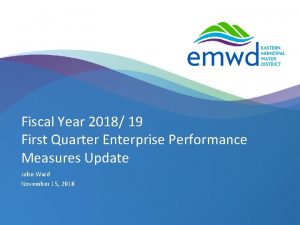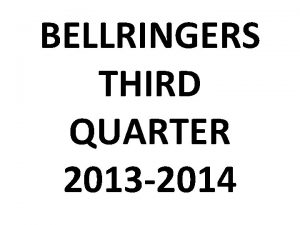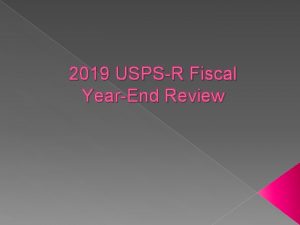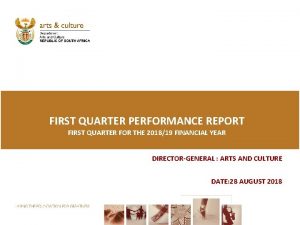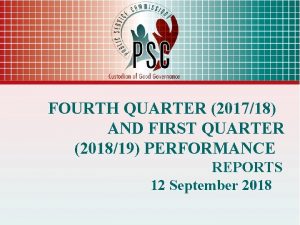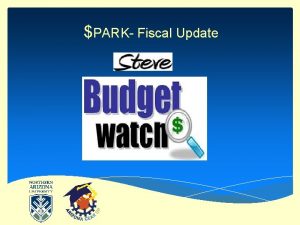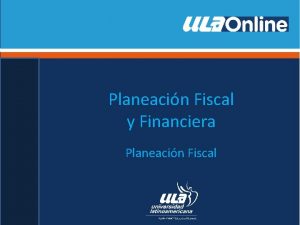Fiscal Year 2019 20 Third Quarter Enterprise Performance
















- Slides: 16

Fiscal Year 2019 -20 Third Quarter Enterprise Performance Measures Update John Ward June 18, 2020 | emwd. org

Fiscal Year 2019 -20 Third Quarter Enterprise Performance Measure Enterprise Measures provide a summary of the District’s performance in a single graphic report. Twelve proposed measures organized by the following categories: • • • Efficiency Reliability Service Safety Financial Performance Goal: Provide the Board of Directors critical and timely business and financial information and identify trends. 2 | emwd. org

Efficiency - Water Operating Cost per AF Delivered Graph Chart 3 | emwd. org Metric: Monthly water operating cost per acre foot (AF) delivered per month during the previous six months. Specifically, it measures the operating cost for water, including purchased water cost, O&M, energy, support costs, and administration relative to total acre-feet delivered. Importance: This metric serves as an indicator of operational efficiency related to the purchase, treatment, pressurization, and distribution of potable water. Goal: The fiscal year goal is $1, 724/AF, which is the average water service operating cost per acre foot from the Fiscal Year 2019 -20 budget ($131. 8 million operating cost for 76, 428 acrefeet in sales). This goal has been averaged out by month taking into account historical data to reflect seasonal changes in water usage. Results: Q 3 results trended slightly above average for the month of March due to lower than projected water deliveries.

Efficiency - Wastewater Treatment Operating Cost per MG Treated Metric: Monthly wastewater operating cost per million gallons (MG) treated per month during the previous six months. The costs include treatment, collections, recycled disposal, energy, sludge hauling, support costs, and administration. Importance: This metric is an indicator of wastewater system efficiency. Goal: The fiscal year goal is $3, 994/MG, which is the average wastewater service operating cost per million gallons from the Fiscal Year 2019 -20 budget ($64. 1 million operating cost for 44 MG over 365 days). Results: Q 3 results trended above average for the month of February due to an increase in operational costs. Graph Chart 6 | emwd. org

Efficiency – Recycled Water Operating Cost per AF Delivered Graph Chart 9 | emwd. org Metric: Monthly recycled water operating cost per acre foot (AF) per month during the previous six months. Specifically, it measures the total operating cost for recycled water, including transmission, pumping, energy, storage, and support costs relative to total acre-feet delivered. Importance: This metric provides the District with a long term indication of recycled water system efficiency. Goal: The fiscal year goal is $158/AF, which is the average recycled water operating cost per acre foot from the Fiscal Year 2019 -20 budget ($7. 4 million operating cost for 47, 000 acre-feet in sales). Results: Q 3 trended above average due to cooler weather and rainfall which resulted in lower sales and higher water storage/discharge costs.

Efficiency – Self-Generated Power Metric: Percent of EMWD self-generated power from solar panels, fuel cells, and micro turbines compared to total potential production. Importance: This metric tracks the District’s efforts to reduce dependency on purchased energy. Goal: The monthly goal is to utilize all selfgeneration potential ability at 90 percent or more. Results: Q 3 results trended below average for the month of March due to malfunctions with the fuel cell units and an inverter failure with the OMC solar panels that has been corrected. 12 | emwd. org

Reliability – Customer Hours Out-of-Service Metric: Sum of the hours out of water multiplied by the number of water accounts affected per event divided by 1000. For example, if 100 customer accounts are out of water for ten hours, the measure would reflect one Out-of-Service hour per 1, 000 accounts for that event. Importance: This metric measures the District’s performance related to restoring water service to our customers. Goal: The fiscal year goal of eight hours per 1, 000 accounts has been established based on 24 months of performance. Results: The trend was favorable for Q 3. The largest outage occurred in March due to a leak in the City of Perris on a 12 -inch mainline. 13 | emwd. org

Reliability – Wastewater Treatment Reliability Metric: This metric is intended to measure the District’s performance related to Wastewater Treatment Facility Production Uptime. It represents the average uptime of various treatment processes. Importance: RWRF production affects the Recycled Water Supply. Goal: A goal of 98 percent uptime has been established based on twelve months of data. Results: The trend was favorable for Q 3. Chart 14 | emwd. org

Reliability – Wastewater Spills of Collection and RWRF Systems Metric: Measures the number of spills in the Wastewater collection and treatment facilities. Within the treatment facilities, a spill is defined as raw or secondary sewage spills greater than 1, 000 gallons, tertiary greater than 50, 000 gallons, or any effluent that left the plant property. Importance: This metric measures the District’s compliance with regulatory requirements. Goal: The fiscal year goal of less than three spills per month has been established based on 24 months of data and industry benchmarks. Results: The largest spill occurred in January due to a temporary bypass installation fail installed by a contractor at the Winchester Lift Station. Approximately 4, 500 gallons was spilled on site and was fully recovered. 16 | emwd. org

Service – Customer Satisfaction Score of Last Experience Survey Metric: Measures the average score of the Last Experience Surveys received. The surveys include customer service call-ins as well as customers who have recently contacted the District regarding a system concern. Importance: This metric provides staff with a leading indicator of customer satisfaction related to recent customer contact. Goal: The fiscal year goal is to receive a four out of five on a 1 -5 survey questionnaire of all survey responses. Results: The results for Q 3 are favorable. 17 | emwd. org

Safety – Injury and Illness Rate Metric: Measures the District’s Injury and Illness Rate as defined by OSHA (Annual Sum of recordable injury/illness multiplied by 200, 000 and divided into the Annual Sum of Hours worked by all employees). The District score is presented as a rolling 12 -month average. Importance: This metric measures the effectiveness of the District’s Total Safety Culture. Goal: The fiscal year goal of three has been established based on 24 months of data. Results: The trend for the past two quarters is favorable. Graph 18 | emwd. org

Financial – General and Administrative Costs as a Percent of Total Operating Cost Metric: Monthly non-allocated general and administrative (G&A) costs as percent of total operating costs (including the G&A costs) during the previous six months. The District score is presented as a rolling 12 -month average. Importance: This metric measures the nonallocated G&A costs to support the general administrative facilities and operations of the District. Goal: The fiscal year goal is 11. 6 percent, which is the level from the Fiscal Year 2019 -20 budget ($26. 9 million non-allocated G&A relative to $243, million cost; $26. 9/$243 = 11. 6 percent). Results: Results trended favorably for the last quarter. Chart 20 | emwd. org

Financial Performance – Net Operating Margin (Revenue Minus Cost) Metric: Monthly operating revenue (water, wastewater, and recycled) less operating costs during the previous six months. Importance: This metric measures the net operating margin of the District’s services. If margins are insufficient, net contributions to District reserves are impacted. Goal: The fiscal year goal is $2. 67 million per month, which is from the Fiscal Year 2019 -20 budget ($262. 3 million in operating revenue less $203. 3 million in operating cost less $26. 9 million of unallocated G&A expense = $32. 1 million annual operating margin). Results: February was below the goal line as a result of an increase in labor cost due to three payroll periods within the month. Trend for March was favorable. Graph 22 | emwd. org

Financial – Capital Improvement Project Actual to Budget Metric: Measures the capital improvement expenditures for a given month in comparison with the forecasted budget. Importance: This metric measures the cumulative result for the fiscal year. The goal is to implement 75 percent of the forecasted budget. Goal: The goal is to be within 25 percent over or under the monthly budget. The fiscal year goal is $91. 2 million. This is spread by month in accordance with project scheduled phases. Results: Results are favorable for the last quarter with $69 million spent to $67 million forecast. Graph 24 | emwd. org

Summary For the third quarter of Fiscal Year 2019 -20, eleven out of twelve measures are performing better than the monthly goal. One measure is not meeting the respective goal: • Recycled Water Operating Cost per AF Delivered Next quarterly report is scheduled for August of 2020. 26 | emwd. org

Contact Information John Ward Director of Engineering Services (951) 928 -3777 Ext. 4453 Email: wardj@emwd. org 27 | emwd. org
 Difference between quarter past and quarter to
Difference between quarter past and quarter to Quarter past 2
Quarter past 2 Define gibbous moon
Define gibbous moon One third quarter
One third quarter When does amazon's fiscal year end
When does amazon's fiscal year end Mount hume classification
Mount hume classification Caries profunda definition
Caries profunda definition Third party risk management conference 2019 new york
Third party risk management conference 2019 new york Support team btse
Support team btse Third sunday of easter year c
Third sunday of easter year c 9th grade in belgium
9th grade in belgium Year 6 sats 2019
Year 6 sats 2019 Year 6 sats 2019
Year 6 sats 2019 Year 5 naplan 2019
Year 5 naplan 2019 Putting the enterprise into the enterprise system
Putting the enterprise into the enterprise system Enterprise
Enterprise Leavers poem
Leavers poem
